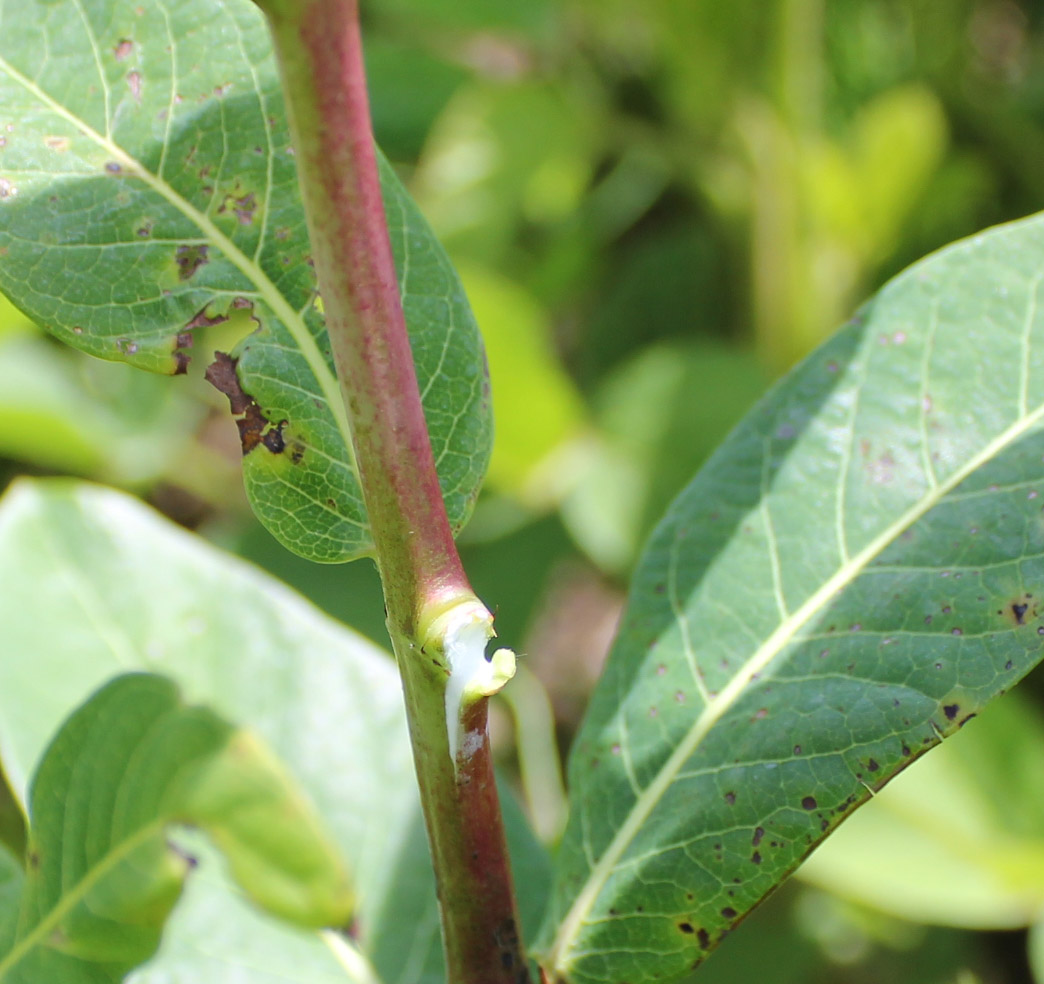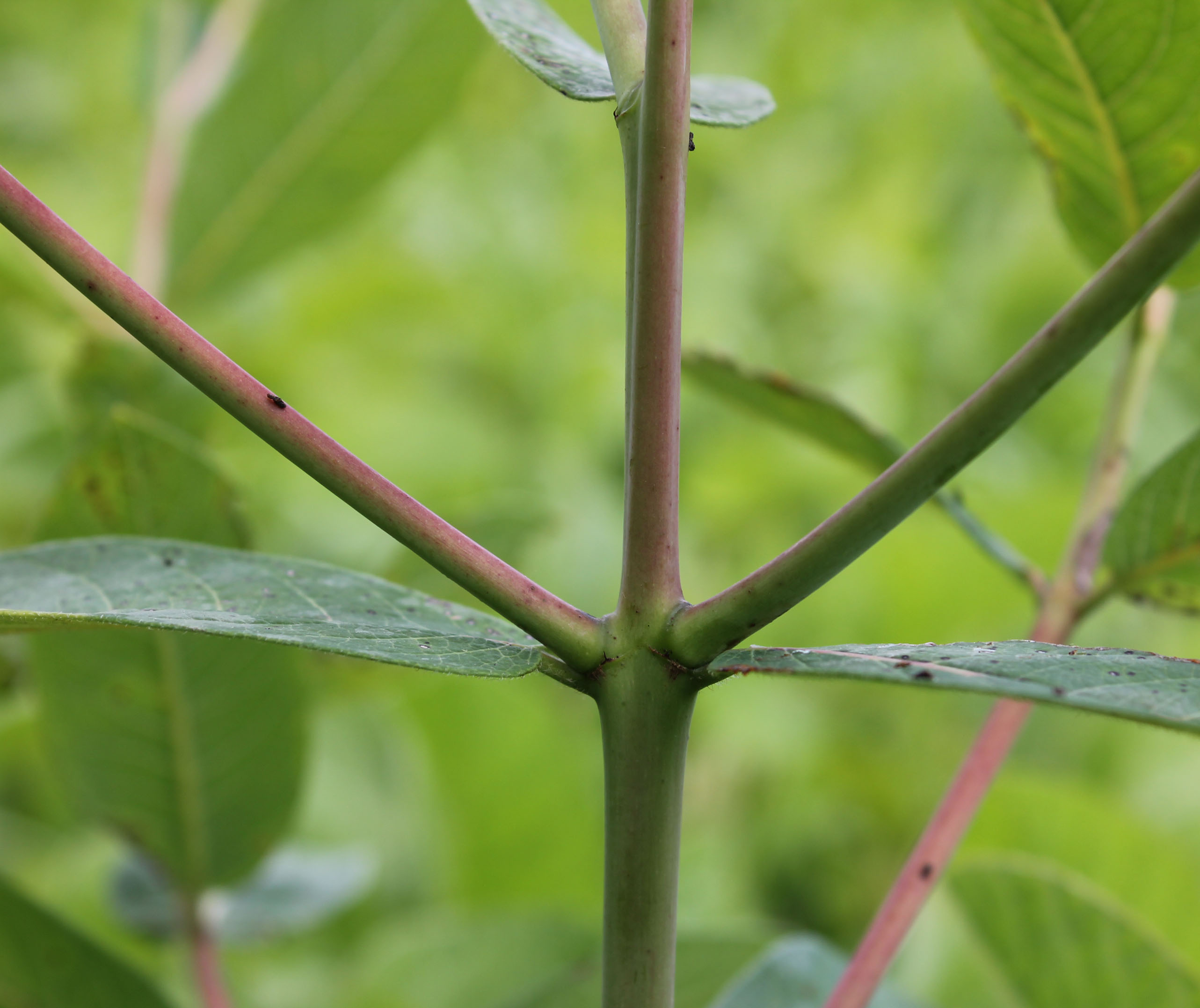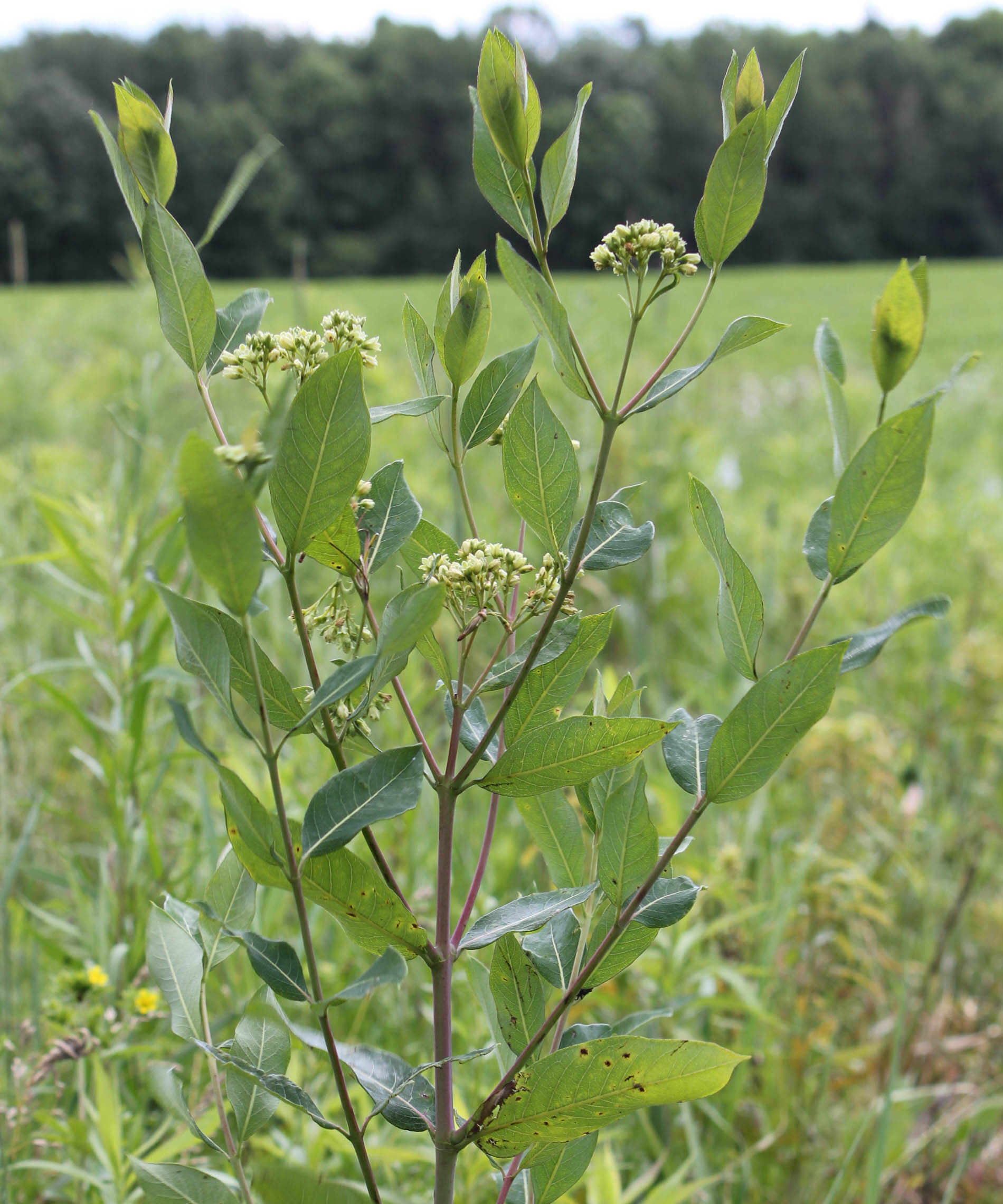Dogbane
Poisonous to livestock when consumed
- Dogbane family (Apocynaceae family):
- Apocynum androsaemifolium L.
- EPPO code:
- APCAN
- Other names:
- Spreading dogbane
Species information
- Lifecycle:
- Perennial.
- Propagation:
- Reproduces by seed and by spreading underground rhizomes.
- Emergence:
- Seed germinates in early spring and into summer.
- Habitat:
- Dogbane is found in a variety of habitats, including cultivated fields. It is, however, more likely to be found in no-till or minimum-till cropping systems.
- Competitiveness:
- When compared to annual dicot weeds, like lamb’s-quarters, dogbane causes less crop yield loss, but it does reduce harvest efficiency. The milky sap affects crop quality; it also contains cardiac glycosides, which can cause livestock poisoning (United States Department of Agriculture, 2006).
Identification clues
Seedling
- Cotyledons:
- Linear to elongated.
- Young leaves:
- Ovate, opposite orientation on the stem.
- Mature leaves:
- While they look similar to its younger leaves, dogbane’s mature leaves are larger and have a prominent, white mid-vein and its underside has fine hairs.
Mature plant
- Stems:
- Its stem is erect, hairless, and often red to greenish-red in colour. When its leaves are pulled from the stem, dogbane exudes a milky sap.
- Flowers:
- Clustered at the end of stems, whitish to pinkish and bell shaped.
- Seeds:
- Light brown and slender, dogbane’s seeds are attached to a white silky parachute.
- Roots:
- Very fine roots attached to an extensive spreading rhizome system.
Often mistaken for
I know it's not Milkweed because the leaves of dogbane are narrower; the stem is red compared to the often- green stem of milkweed; and the flowers of dogbane are white compared to the purplish- pink flowers of milkweed.





Updated: August 16, 2023
Published: January 13, 2023